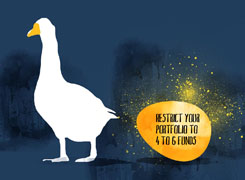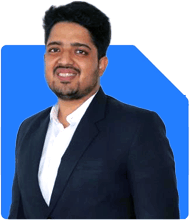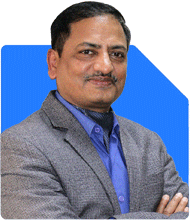Ramalingam Kalirajan |10881 Answers |Ask -Follow
Mutual Funds, Financial Planning Expert - Answered on May 29, 2024
He has an MBA in finance from the University of Madras and is a certified financial planner.
He is the director and chief financial planner at Holistic Investment, a Chennai-based firm that offers financial planning and wealth management advice.... more

Hi Sir I am 34 years old earning aroung 70k/m 16 k savings /month Could you please review my MF portfolio should i make any changes ET money high growth 5k/m started this year DSP Tax saver- started May 2017 3k/m CanRob Tax saver Jan 2021 2k/m PPFFAS Flexi Started Jan 2021- 2k/m DSP small - lumpsum 160000 DSP quant - lumpsum 105000 Quant small cap 2k/m Motilal Oswal Nasdag 100 FOF 1k/m SBI Bluechip 1k/m UTI Mid - July2021 1k/m Stopped DSP Mid - July 2021 1k/m Stopped UTI Flexi - July2021 1k/m stopped PPF 500/m
Your Current Holdings:
You've shown commendable discipline in your investment journey with a monthly surplus of Rs. 16,000.
Your portfolio demonstrates a diversified mix of mutual funds across various categories, indicating a thoughtful approach towards wealth accumulation.
It's evident that you've been investing systematically, which is a prudent strategy for long-term wealth creation.
Your allocation to tax-saving funds is strategically aligned with your financial goals, ensuring tax efficiency while building wealth.
Areas of Consideration:
While your portfolio appears well-structured, it's crucial to periodically review and rebalance to align with your evolving financial objectives and market conditions.
The decision to halt investments in certain funds in July 2021 indicates a proactive stance towards optimizing your portfolio.
Lumpsum investments in specific funds indicate confidence in their potential, but it's essential to monitor their performance regularly.
The absence of index funds in your portfolio raises the question of whether you've explored their benefits adequately.
Recommendations:
Regularly reviewing your portfolio's performance and rebalancing it in line with your financial goals is imperative.
Consider diversifying into index funds to harness the benefits of low-cost, passive investing, especially in segments where actively managed funds may underperform.
Direct funds offer lower expense ratios, but investing through a Certified Financial Planner can provide personalized advice and ongoing support, enhancing the overall value of your investments.
In conclusion, your portfolio reflects a disciplined and diversified approach towards wealth creation. However, exploring the benefits of index funds and leveraging the expertise of a Certified Financial Planner could further optimize your investment strategy.
Best Regards,
K. Ramalingam, MBA, CFP,
Chief Financial Planner,
www.holisticinvestment.in
You may like to see similar questions and answers below
Omkeshwar Singh | Answer |Ask -Follow
Head, Rank MF - Answered on Oct 17, 2022
Nikunj Saraf | Answer |Ask -Follow
Mutual Funds Expert - Answered on May 22, 2023
Sanjeev Govila | Answer |Ask -Follow
Financial Planner - Answered on Jun 15, 2023
Ramalingam Kalirajan |10881 Answers |Ask -Follow
Mutual Funds, Financial Planning Expert - Answered on May 08, 2024
Ramalingam Kalirajan |10881 Answers |Ask -Follow
Mutual Funds, Financial Planning Expert - Answered on Jul 24, 2024
Dr Dipankar Dutta |1841 Answers |Ask -Follow
Tech Careers and Skill Development Expert - Answered on Dec 14, 2025
Nayagam P P |10854 Answers |Ask -Follow
Career Counsellor - Answered on Dec 14, 2025
Radheshyam Zanwar |6744 Answers |Ask -Follow
MHT-CET, IIT-JEE, NEET-UG Expert - Answered on Dec 14, 2025
Radheshyam Zanwar |6744 Answers |Ask -Follow
MHT-CET, IIT-JEE, NEET-UG Expert - Answered on Dec 14, 2025
Dr Dipankar Dutta |1841 Answers |Ask -Follow
Tech Careers and Skill Development Expert - Answered on Dec 14, 2025
Dr Dipankar Dutta |1841 Answers |Ask -Follow
Tech Careers and Skill Development Expert - Answered on Dec 13, 2025
Dr Dipankar Dutta |1841 Answers |Ask -Follow
Tech Careers and Skill Development Expert - Answered on Dec 13, 2025
Mayank Chandel |2575 Answers |Ask -Follow
IIT-JEE, NEET-UG, SAT, CLAT, CA, CS Exam Expert - Answered on Dec 13, 2025
Radheshyam Zanwar |6744 Answers |Ask -Follow
MHT-CET, IIT-JEE, NEET-UG Expert - Answered on Dec 13, 2025
Mayank Chandel |2575 Answers |Ask -Follow
IIT-JEE, NEET-UG, SAT, CLAT, CA, CS Exam Expert - Answered on Dec 13, 2025


























